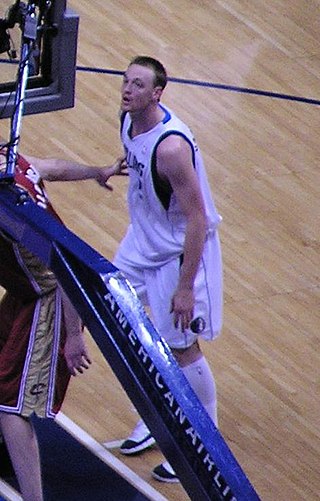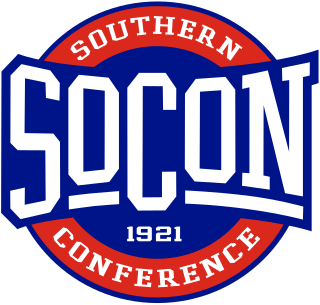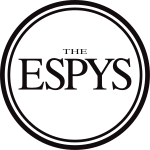
The Chillicothe Paints are a collegiate summer baseball team based in Chillicothe, Ohio, in the United States. The team is a member of the summer collegiate Prospect League. The Paints previously played in the professional independent Frontier League from 1993 to 2008. The Paints play their home games at V.A. Memorial Stadium in Chillicothe.

An ESPY Award is an accolade currently presented by the American broadcast television network ABC except 2020, and previously ESPN, to recognize individual and team athletic achievement and other sports-related performance during the calendar year preceding a given annual ceremony. The first ESPYs were awarded in 1993. Because of the ceremony's rescheduling prior to the 2002 iteration thereof, awards presented in 2002 were for achievement and performances during the seventeen-plus previous months. As the similarly styled Grammy, Emmy, Academy Award, and Tony, the ESPYs are hosted by a contemporary celebrity; the style, though, is lighter, more relaxed and self-referential than many other awards shows, with comedic sketches usually included.

Keith Adam Van Horn is an American former professional basketball player. Van Horn played for the New Jersey Nets, Philadelphia 76ers, New York Knicks, Milwaukee Bucks, and the Dallas Mavericks of the National Basketball Association (NBA).
Donald Neil Johnston was an American basketball player and coach. A center, Johnston played in the National Basketball Association (NBA) from 1951 to 1959. He was a member of the Philadelphia Warriors for his entire career. Known for his hook shot, Johnston was a six-time NBA All-Star; he led the NBA in scoring three times and led the league in rebounding once. He won an NBA championship with the Warriors in 1956. After his playing career ended due to a knee injury, Johnston coached in the NBA, in other professional basketball leagues, and at the collegiate level. He was inducted into the Naismith Memorial Basketball Hall of Fame as a player in 1990.
The Best Male Athlete ESPY Award, known alternatively as the Outstanding Male Athlete ESPY Award, is an annual award honoring the achievements of individual men from the world of sports. It has been presented annually at the ESPY Awards since 1993 to the male voted irrespective of nationality or sport contested, adjudged to be the best athlete in a given calendar year. The Best Male Athlete ESPY Award trophy, designed by sculptor Lawrence Nowlan, is presented to the recipient at an annual ceremony in Los Angeles. Since 2004, the winner has been chosen by online balloting through three to five choices selected by the ESPN Select Nominating Committee. Before that, determination of the winners was made by an panel of experts. Through the 2001 iteration of the ESPY Awards, ceremonies were conducted in February of each year to honor achievements over the previous calendar year; awards presented thereafter are conferred in July and reflect performance from the June previous.
The ESPY Award for Best College Athlete, Men's Sports, known before 2021 as the Best Male College Athlete ESPY Award, is an annual award honoring the achievements of a male individual from the world of collegiate sports. It was first presented as part of the ESPY Awards in 2002, following the subsumption of the Best College Football Player and Best Male College Basketball Player ESPY Awards, each of which had been presented annually between 1993 and 2001, inclusive. The award trophy, designed by sculptor Lawrence Nowlan, is awarded to the sportsman adjudged to be the best in a given calendar year of those contesting collegiate sport in the United States through the National Collegiate Athletic Association (NCAA).
The ESPY Award for Best College Athlete, Women's Sports, known before 2021 as the Best Female College Athlete ESPY Award, is an annual award honoring the achievements of a female individual from the world of collegiate sports. It was first presented as part of the ESPY Awards in 2002, following the subsumption of the Best Female College Basketball Player ESPY Award, which was presented annually between the 1993 and 2001 ceremonies, inclusive. The award trophy, designed by sculptor Lawrence Nowlan, is awarded to the sportswoman adjudged to be the best in a given calendar year of those contesting collegiate sport in the United States through the National Collegiate Athletic Association (NCAA). Since the 2004 awards, the winner has been chosen by online voting through three to five nominees selected by the ESPN Select Nominating Committee. Before that, determination of the winners was made by an panel of experts. Through the 2001 iteration of the ESPY Awards, ceremonies were conducted in February of each year to honor achievements over the previous calendar year; awards presented thereafter are conferred in July and reflect performance from the June previous.
The Best Male Action Sports Athlete ESPY Award is an annual award honoring the achievements of a male athlete from the world of action sports. It was first awarded as part of the ESPY Awards in 2004 after the non-gender-specific Best Action Sports Athlete ESPY Award was presented the previous two years. The Best Male Action Sports Athlete ESPY Award trophy, created by sculptor Lawrence Nowlan, is presented to the male adjudged to be the best action sports athlete in a given calendar year. Balloting for the award is undertaken by fans over the Internet from between three and five choices selected by the ESPN Select Nominating Committee, which is composed of a panel of experts. It is conferred in July to reflect performance and achievement over the preceding twelve months.
The Chuck Taylor Most Valuable Player Award was created to honor the most valuable player of the National Association of Intercollegiate Athletics (NAIA) men's basketball national tournaments. Established in 1939 and later named as an homage to the Chuck Taylor All-Stars, an iconic basketball shoe in the early 20th century, it has been awarded every year with the exceptions of 1944 due to World War II and 2020 due to the coronavirus pandemic. Between the 1991–92 and 2019–20 seasons, the NAIA was split into Division I and Division II. Each division subsequently held their own national tournament, with MVPs awarded for them respectively. Starting with the 2020–21 season, the NAIA returned to non-divisional classifications.
The NCAA Sportsmanship Award is given to men and women in National Collegiate Athletics Association sports who have demonstrated one or more of the ideals of sportsmanship, including fairness, civility, honesty, respect and responsibility. It was created and first awarded in 1999.

The Mountain West Conference Men's Basketball Player of the Year is an award given to the Mountain West Conference's most outstanding player. The award was first given following the 1999–2000 season, the first year of the conference's existence. As of 2023, no player has received the award multiple times. Two winners of the conference award were consensus national players of the year: Andrew Bogut of Utah (2005) and Jimmer Fredette of BYU (2011).

The Mid-American Conference Men's Basketball Player of the Year is an award given to the most outstanding men's basketball player in the Mid-American Conference (MAC). The award was first given following the 1967–68 season. Four players have won the award multiple times: Tom Kozelko, Ron Harper, Gary Trent and Bonzi Wells. Trent is the only player to have been honored as player of the year three times (1993–95). There have been no ties, nor has any player from the MAC ever won any of the national player of the year awards.

The Southern Conference Men's Basketball Player of the Year is an award given to the Southern Conference's (SoCon) most outstanding player. The award was first given following the 1951–52 season. Fred Hetzel of Davidson is the only player to have won the award three times (1963–1965). Sixteen other players have won the award twice, most recently done by Isaiah Miller of UNC Greensboro.

The Western Athletic Conference Men's Basketball Player of the Year is an award given to the Western Athletic Conference's (WAC) most outstanding player. The award was first given following the 1980–81 season. Keith Van Horn of Utah and Nick Fazekas of Nevada are the only players to have won the award three times. Three other players—Michael Cage, Josh Grant and Melvin Ely—have won the award twice. Danny Ainge, the first ever WAC Player of the Year, was also the John R. Wooden Award winner in 1980–81.

The Big West Conference Men's Basketball Player of the Year is an annual award given to the Big West Conference's most outstanding player. The conference was formed in 1969 and known as the Pacific Coast Athletic Association until 1988. The award was first given following the 1969–70 season. No player has won the award three times, but there have been eight two-time players of the year. Larry Johnson of UNLV was also the national player of the year in 1990–91, the same season of his second consecutive Big West Player of the Year accolade.

The Northeast Conference Men's Basketball Player of the Year is an annual award given to the Northeast Conference's (NEC) most outstanding player. The award was first given following the 1982–83 season, when the league was known as the ECAC Metro Conference.

The Big Sky Conference Men's Basketball Player of the Year Award, officially known as the Big Sky Conference Men's Basketball Most Valuable Player Award, is an annual award given to the Big Sky Conference's most outstanding player. The award was first given following the 1978–79 season. Only one player, Larry Krystkowiak of Montana, has won the award three times (1984–1986). Three others have been two-time winners: Orlando Lightfoot of Idaho, and Weber State's Harold Arceneaux and Damian Lillard. Weber State has the most all-time awards (11) and individual winners (9). Montana and Eastern Washington are tied for second in total awards with seven apiece.

The Summit League Men's Basketball Player of the Year is an annual award given to the most outstanding men's basketball player in the Summit League. The award was first given following the 1982–83 season. Two players, Caleb Green of Oral Roberts and Mike Daum of South Dakota State, have each won the award three times. Five other players have won the award twice: Jon Collins of Eastern Illinois, Tony Bennett of Green Bay, Bryce Drew of Valparaiso, Keith Benson of Oakland, and Max Abmas of Oral Roberts.
The 1943 Nevada Wolf Pack football team, known for the final three games as the Flying Wolves and Flying Wolfpack, was an American football team that represented the University of Nevada as an independent during the 1943 college football season. In their fifth season under head coach Jim Aiken, the team compiled a 4–1–1 record.
Edward Harry Pine Jr. was an American football linebacker who played college football for Utah and professional football in the National Football League (NFL) for the San Francisco 49ers from 1962 to 1964 and for the Pittsburgh Steelers in 1965.











